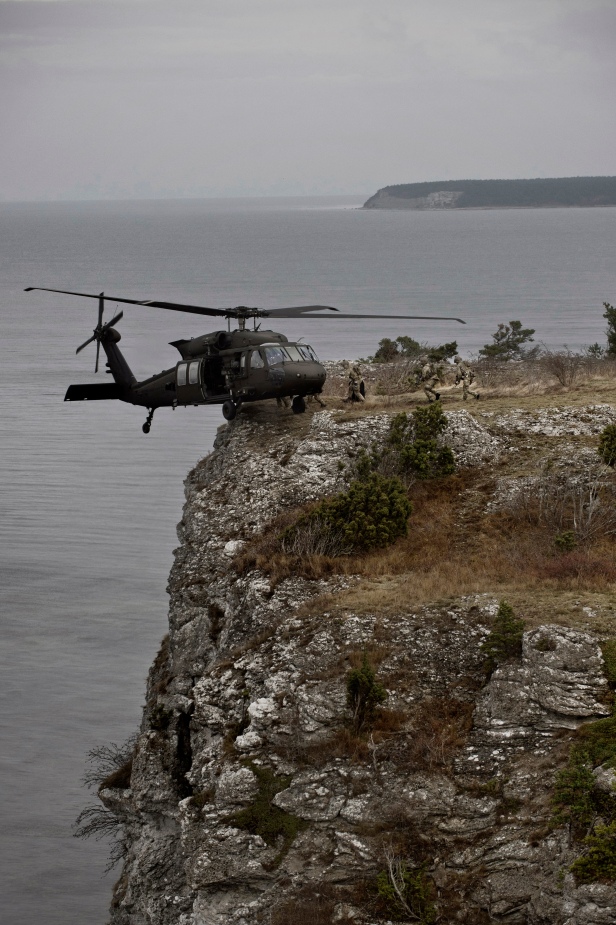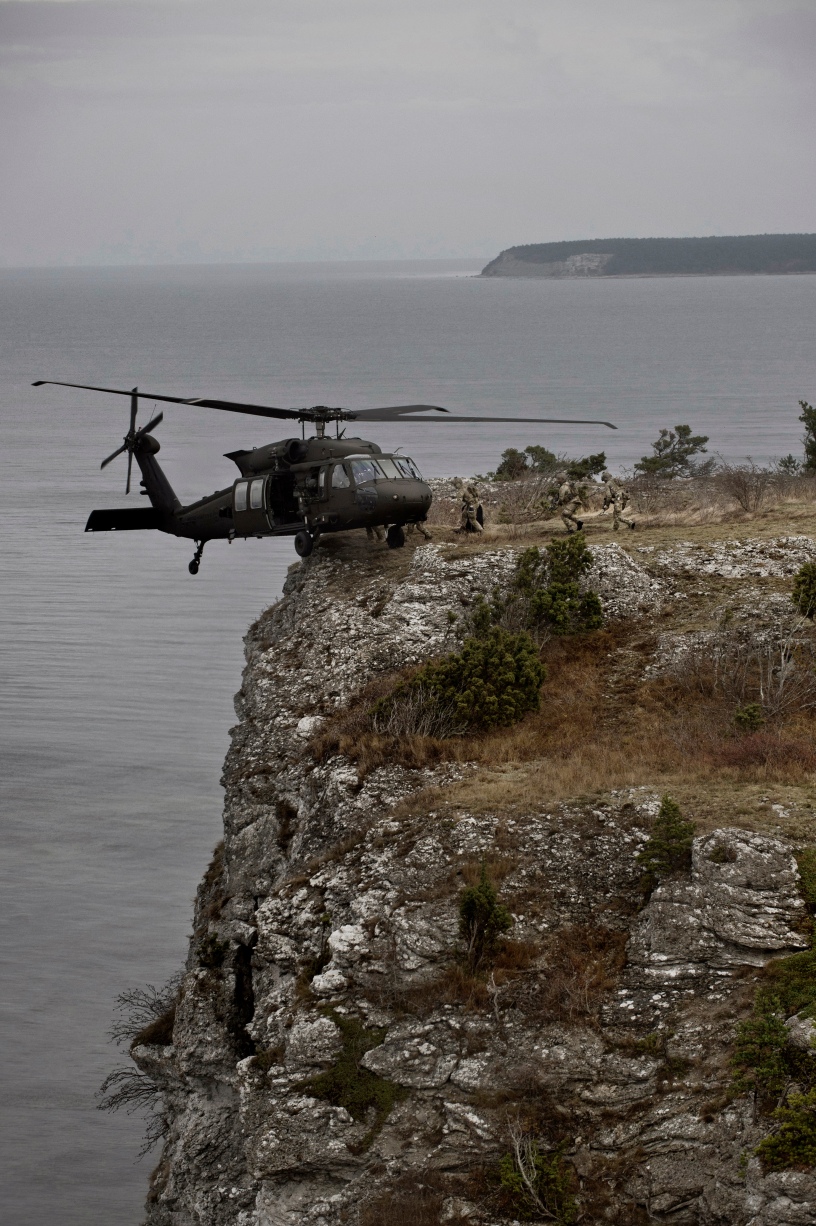This morning the Swedish Commander in Chief surprised the better part of the Nordic defence community by announcing that the mechanised company recently deployed to Gotland as part of a readiness check won’t go back to Skövde where its parent unit, P4 Skaraborg Regiment, is based. Instead, active as of 0700 this morning, it is stationed on Gotland in defence of the island.
This is a drastic move. The new 18. Battlegroup, a mechanised battalion with a mechanised and an armoured company plus support units, is already in training on the Swedish mainland. However, it was planned to become active in 2018. This has now been changed to mid-2017, which together with the decision to transfer one of the existing companies to the island to cover part of the interim year is a major step (the company won’t have to cover the whole time alone, but the duty will be transferred to another unit at some point). Not only is there an economic issue at stake, with already the original Battlegroup Gotland putting added strain on an already stretched defence force, but also the personnel factor. Soldiers and officers with their homes and families in Skövde woke up to the news that they will be staying on the island until further notice. In a time when the defence forces has had a hard time filling its personnel needs, this is certainly not a decision taken lightly.

The unit has been laughed at, including being called “The Kamikaze Company” on behalf of its small size (150 persons), and Russian propaganda noting with poorly hidden contempt that the soldiers aren’t yet allowed to use the local firing range.
However, the situation isn’t as desperate as it seems at first glance. For anyone planning to invade the island, there is a huge difference having to meet no active soldiers at all, or having to do with mechanised infantry including their CV 9040’s. These modern infantry fighting vehicles come equipped with the classic 40 mm Bofors sporting a mix of modern APDS and HE ammunition. In effect, it is no longer enough to land an airliner full of paras on Visby airport, but the invaders need to bring more men and heavier weaponry. This means further preparations involving more people, leading to a lower likelihood of achieving surprise, in turn allowing the defenders greater notice and the possibility to further strengthen their defences with more units. Even in the face of a full-blown amphibious invasion, the unit together with the local Home Guard should be able to conduct a fighting retreat towards Visby, making sure the harbour is in Swedish hands long enough to allow the rest of the regiment time to arrive.
What is worrying, however, is the fact that the temperature around the Baltic Sea seems to have dropped drastically in just a few weeks. Swedish blogger Jägarchefen notes that the last three weeks have featured a number of stern statements by both Swedish, US, and Russian officials. This has now culminated in the Swedish decision not to stand down after a readiness exercise. What exactly has caused this development is not publicly known, but at the same time US vice-president Biden gave Sweden some form of security guarantees in the face of Russian aggression, Swedish officials have quietly upgraded the risk of an “isolated attack on Sweden” from “improbable” to “low”. Rumours are also circulating that the recent Russian exercise caused the Swedish Defence Force to very nearly raise their readiness, something which has not happened since the Russian invasion of Crimea. From the Finnish viewpoint, there is a natural question that deserves to be asked:
What does the Swedish Commander-in-Chief know, that our politicians pretend they don’t?


On the main picture is showing a Finnish missileboat…. Sidenumber 81